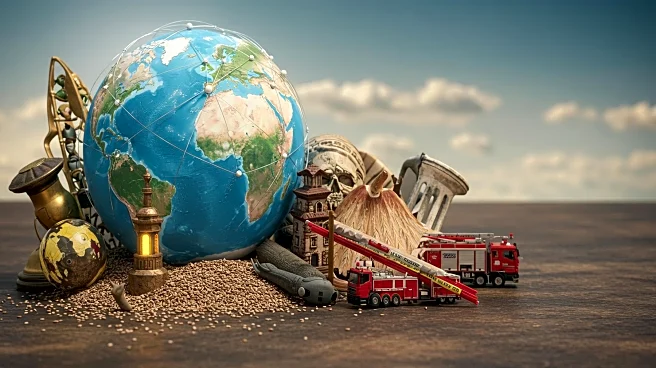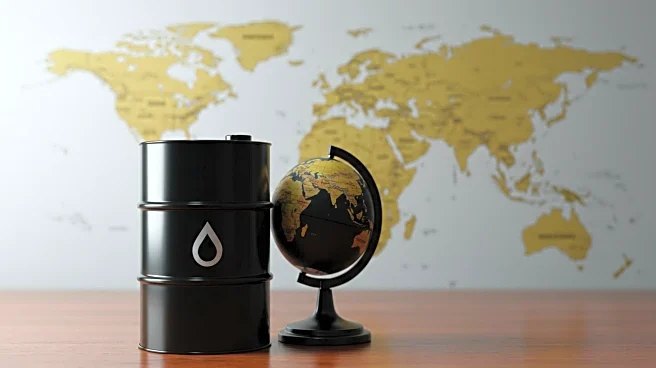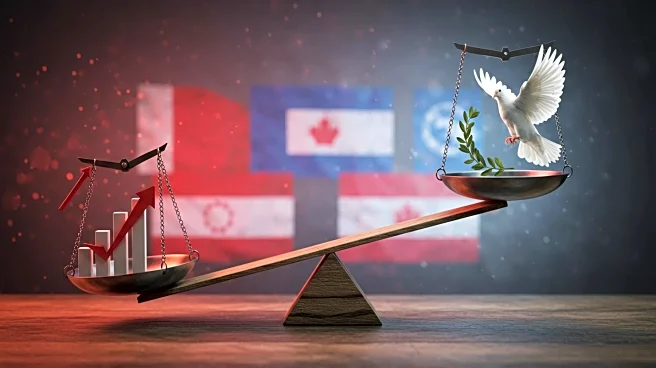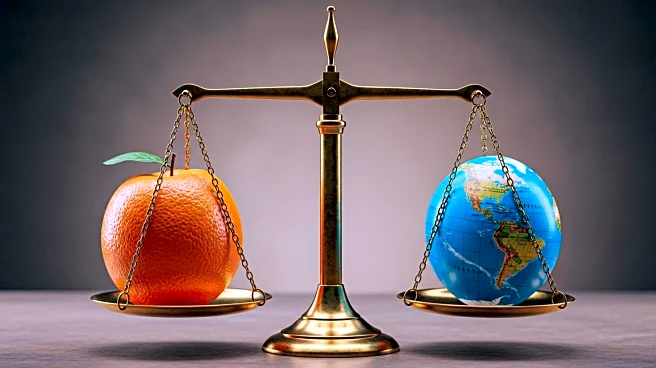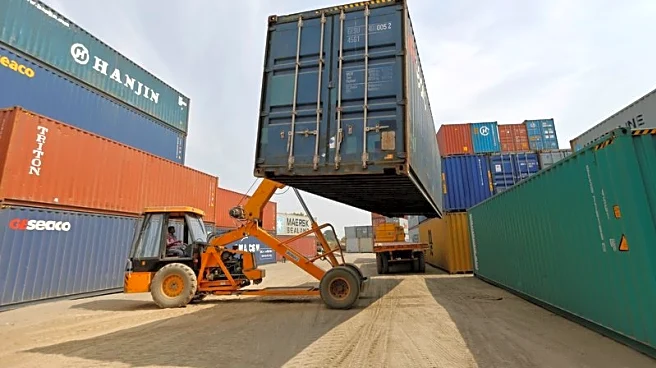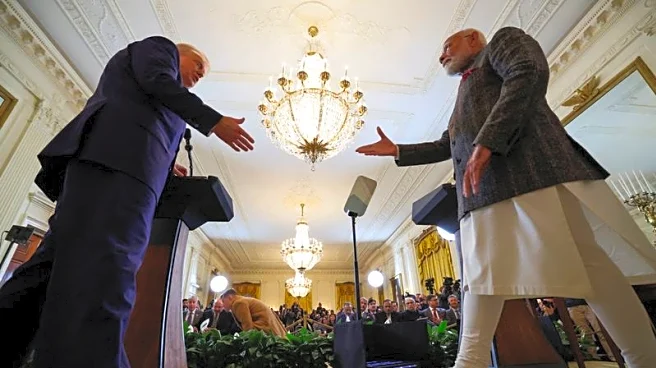What's Happening?
President Donald Trump has imposed an additional 25% tariff on Indian goods, citing India's continued imports of Russian oil. This move has significantly escalated trade tensions between the United States and India. The new tariffs will increase duties on some Indian exports to as high as 50%, making them among the highest levied on any U.S. trading partner. In response, Indian Prime Minister Narendra Modi has called for greater self-reliance and announced a reduction in goods and services taxes (GST) starting in October to boost domestic consumption. Modi emphasized the importance of protecting Indian farmers and promoting local manufacturing, particularly in sectors like semiconductor chips and critical minerals.
Why It's Important?
The imposition of tariffs by President Trump is likely to have significant economic implications for both the United States and India. For India, the tariffs threaten to disrupt access to its largest export market, potentially impacting sectors such as textiles, footwear, and jewelry. This could slow down growth in what is currently the world's fastest-growing major economy. For the United States, the tariffs could lead to increased prices for imported goods and potential retaliatory measures from India, which may include boycotts of American companies. The situation underscores the fragility of international trade relations and the potential for economic policies to impact global supply chains and market dynamics.
What's Next?
The future of U.S.-India trade relations remains uncertain as both countries navigate the fallout from the tariffs. India may seek to strengthen its domestic industries and reduce reliance on imports, while the United States may face pressure from domestic businesses affected by the tariffs. Diplomatic efforts may be necessary to resolve the tensions and prevent further economic disruption. Additionally, the Indian government may continue to push for self-reliance and explore new trade partnerships to mitigate the impact of U.S. tariffs.
Beyond the Headlines
The tariffs highlight broader geopolitical dynamics, including the influence of Russia in global trade and the strategic decisions countries make in response to international pressure. The situation also raises questions about the balance between national economic policies and global trade agreements, as well as the role of tariffs as a tool for political leverage. The emphasis on self-reliance by India reflects a growing trend among nations to prioritize domestic production and reduce dependency on foreign markets.


